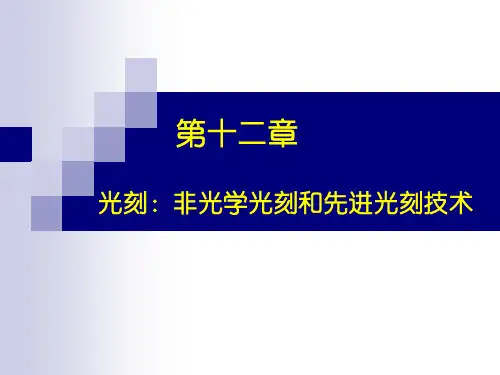非光学光刻技术PPT课件
- 格式:ppt
- 大小:1.27 MB
- 文档页数:75
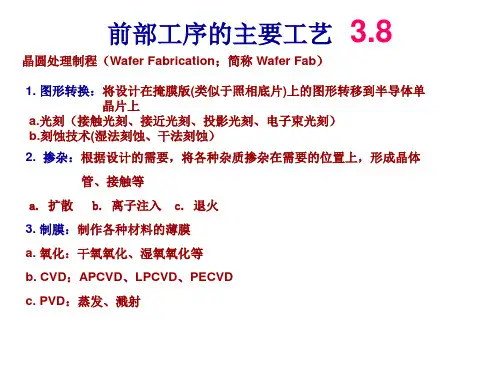
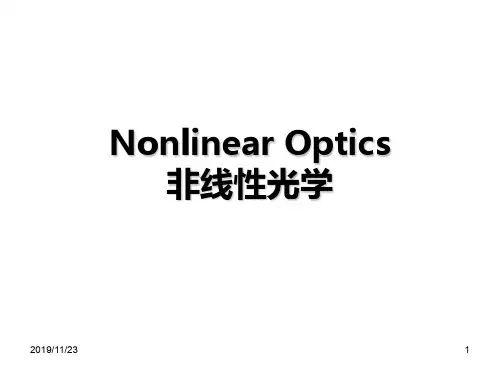
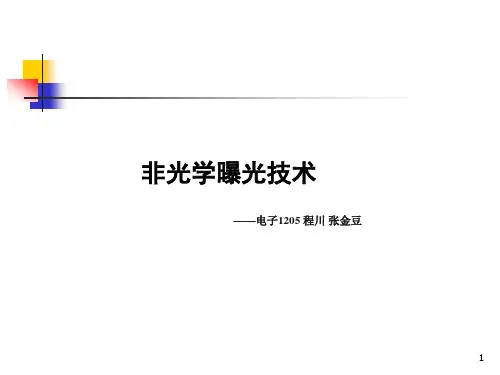



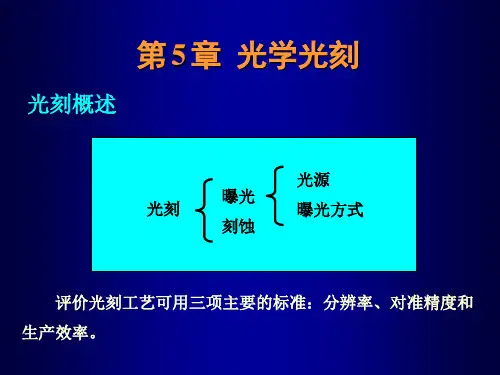

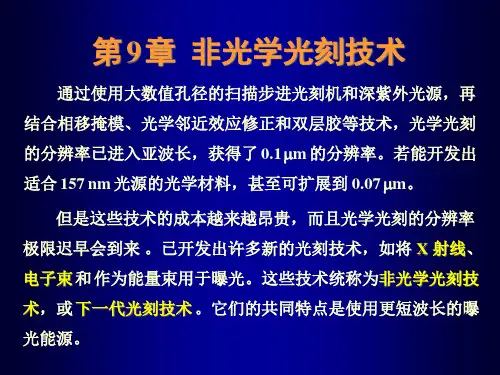
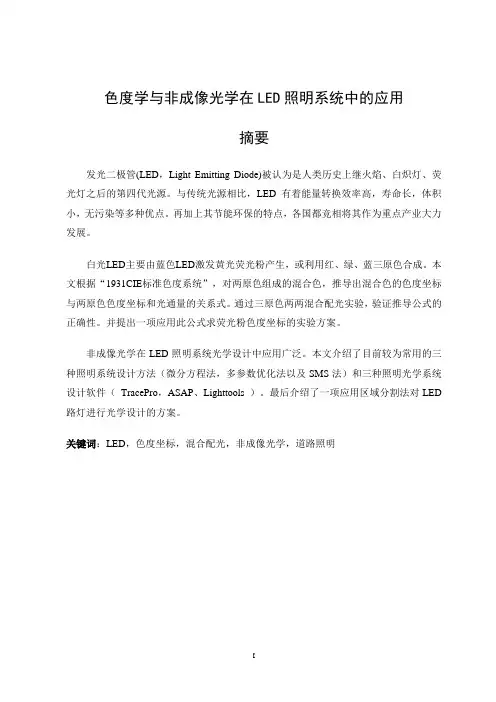
色度学与非成像光学在LED照明系统中的应用摘要发光二极管(LED,Light Emitting Diode)被认为是人类历史上继火焰、白炽灯、荧光灯之后的第四代光源。
与传统光源相比,LED有着能量转换效率高,寿命长,体积小,无污染等多种优点。
再加上其节能环保的特点,各国都竞相将其作为重点产业大力发展。
白光LED主要由蓝色LED激发黄光荧光粉产生,或利用红、绿、蓝三原色合成。
本文根据“1931CIE标准色度系统”,对两原色组成的混合色,推导出混合色的色度坐标与两原色色度坐标和光通量的关系式。
通过三原色两两混合配光实验,验证推导公式的正确性。
并提出一项应用此公式求荧光粉色度坐标的实验方案。
非成像光学在LED照明系统光学设计中应用广泛。
本文介绍了目前较为常用的三种照明系统设计方法(微分方程法,多参数优化法以及SMS法)和三种照明光学系统设计软件(TracePro,ASAP、Lighttools )。
最后介绍了一项应用区域分割法对LED 路灯进行光学设计的方案。
关键词:LED,色度坐标,混合配光,非成像光学,道路照明The Application of Chromaticity and Non-imaging Opticsin LED IlluminationAbstractLigth Emitting Diode(LED) is considered as the fourth-generation light source after Flame , Incandescent and Fluorescent in the history of mankind. Compared with traditional light sources , LED has high energy conversion efficiency, long life, small size, environment friendly and other advantages , so stats are competing to develop it as a key industry.To generate white LED , we can use blue LED chip to explode yellow phosphor, or use the trichromatic of red, green and blue to composite . This paper base on "1931CIE standard color system", for any color which composite of two primary color , the relation between the chromaticity coordinates of mixed color and the two primary color chromaticity coordinates and flux is derived. The formula is proved correct by the experiment mixed with any two of the trichromatic. According to this formula , present a perimental program to calculate the phosphor chromaticity coordinates.LED Non-imaging optics has been widely used in illumination system. In this paper ,We presents three more commonly used methods of illumination system design(ultiparameter optimization , partial differential equations and SMS)and three illumination optical system design software(TracePro、ASAP 、Lighttools ). In the end,I introduce a idea of region division for the optical design of LED street lights.Key words:LED , Chromaticity coordinates , Color Matching , No-inmaging optics Street lighting目录摘要 (I)Abstract (II)第一章绪论 (1)1.1 LED的发展现状 (1)1.2 LED的封装结构 (1)1.3 白光LED的技术原理及照明系统光学设计 (3)1.3.1 白光LED的发光机理 (3)1.3.2 LED照明系统的光学设计 (4)1.4 论文的研究内容及意义 (7)第二章LED光源配制色度坐标理论计算与实验验证 (9)2.1 色度学原理 (9)2.1.1 CIE1931RGB 真实三原色表色系统 (9)2.1.2 1931CIE-XYZ标准色度系统 (15)2.2 LED光源配光制过程中混合光的色度坐标推导计算 (17)2.3 以红绿蓝三原色配光实验验证(2-13)式的正确性 (19)2.4 用三基色原理测荧光粉色度坐标实验方案 (22)第三章非成像光学理论及常用的设计方法 (24)3.1 非成像光学相关概念 (24)3.1.1 基本概念 (24)3.1.2 汇聚比与理论最大值 (24)3.1.3 光学扩展量(étendue) (26)3.2 光学自由曲面构造 (27)3.2.1 多参数优化法 (28)3.2.2 微分方程构造自由曲面 (33)3.3 多表面同时设计法SMS法 (39)第四章LED照明系统中的光学设计 (41)4.1 光学设计中常用的计算机模拟软件 (41)4.2 照明光学系统计算机辅助设计的基本步骤 (42)4.3 白光LED 应用于道路照明的设计 (42)总结与展望 (47)参考文献 (48)致谢 (49)外文原文 (50)中文翻译 (59)第一章绪论1.1 LED的发展现状自20世纪60年代初首只GaAsP红色发光二极管(以下简称LED)问世以来,经过40年的努力,LED的研究和生产得到迅速发展。
